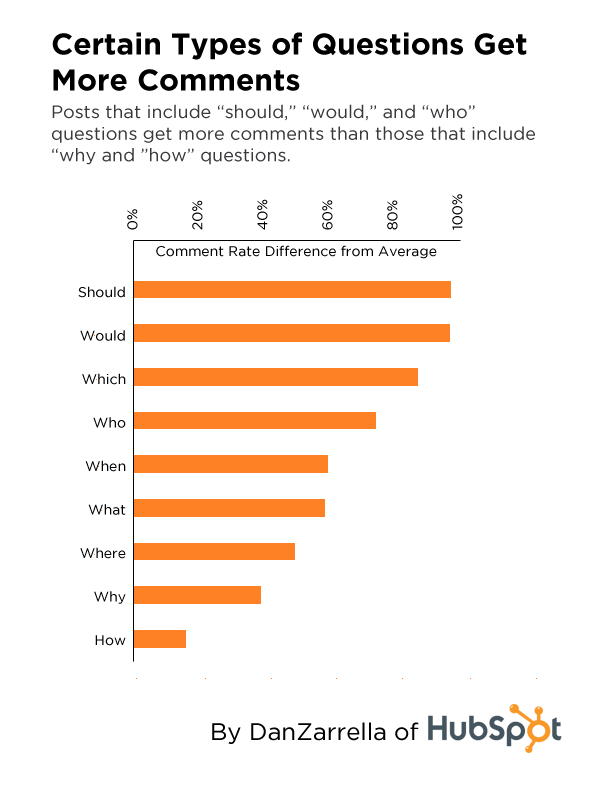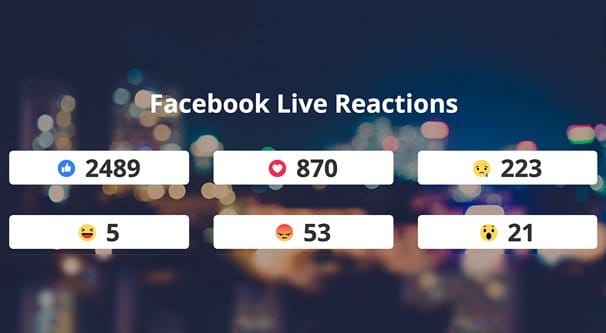 Written by ContentPowered.com
Written by ContentPowered.com
Back near the end of 2015, Facebook started testing a new reactions system to augment the like button. This came as more and more people demanded a dislike button, and while no dislike button has ever materialized, the new reactions have settled in common use.
Understanding Reactions
Each reaction expresses a range of sentiments a user can feel about a post. They cover most of the bases, though they avoid any overt “dislike” sentiment, because of concerns for the emotional well-being of Facebook users. They’ve said before that a pure dislike button, while it works for things like tragic news stories or politics you disagree with, could be used for damaging bullying and potentially even drive users off the site, or worse.
The new sentiments all have their place in social discourse, and they can all be used to engage with a post in various ways. As a brand, you can take advantage of different sentiments to get attention and engagement.
- Like. This is your traditional button, and many people still use it as a generic engagement button. It will generally be the most common form of engagement for non-guided posts.
- Love. This is your extreme like, the Like2.0. Typically used for feel-good stories and pictures of pets, it’s a deeper expression of appreciation.
- Haha. This is your “I found this amusing” reaction. People use it for comedic content and for ironic laughing at others misfortune.
- Wow. This is a “this is impressive” reaction. It’s often used for awe-inspiring landscapes, gorgeous photos, impressive feats, and other such posts.
- Sad. This is the basic negative reaction and can be used to express sympathy. You’ll find it on everything from posts about eating the last cookie to posts about terrorist attacks.
- Angry. This, obviously, expresses anger. People use it for anger, as well as frustration and other negative emotions that lack sympathy.
So the first thing you need to do is tailor every post for some kind of reaction. General posts will get a mixture of all of them, but highly targeted posts looking to elicit one specific reaction will be able to pull in even more engagement from that reaction.
Now, let’s look at various ways you can encourage more reactions of any sort out of your posts.
About Your Posts
These tips are focused on helping you improve the content and style of your organic posts. Always experiment and see what changes you can make to improve post engagement.
- Keep your posts short. Studies have shown that posts with a total character count under 70 do better in both reactions and comments than longer posts. The longer a post is, the fewer people will read and react to it.
- Include emojis, particularly the reactions themselves. It’s a way of making your brand seem more casual and approachable, and it’s a way of subtly reminding users that the reactions exist and that they can use them.
- Time your posts on Thursday or Friday. Other studies have shown that Thursday and Friday have the highest engagement rates, particularly Friday. For everyone out there who has faffed about on Facebook when they should be working on a late Friday afternoon, you know exactly why that might be.
- Ask questions. When you ask a question it invites response. “Should”, “Would”, “Which”, and “Who” questions do the best, according to a study by Dan Zarella of Hubspot:
- Make up audacious fake news. You have to be careful with this one, that your fake news isn’t too overly believable. Make up something like “aliens from Jupiter have taken over the local Starbucks” rather than something you’d see on Fox News.
- Reference conspiracy theories. Saying crazy things gets people talking, whether you believe it or not. The more outlandish the theory, the more you can riff on it and rile people up.
- Post inspirational quotes. When in doubt, there’s always the motivational poster route. Play with inspirational quotes and you’ll see what sorts of attitudes your followers are into. Even if you think they’re pithy and lack substance, they can still be very profound to other people in your audience.
- Post funny anecdotes. You never want to get too personal with your business page, but the occasional personal anecdote can be very effective, assuming it’s something you can tie into your marketing or your brand in some way. It makes you more human and less corporate.
- Tease upcoming content or products. Everyone loves a good teaser, it’s why movies have several trailers and it’s why people line up outside stores for new items. Build hype and get people talking by teasing elements of a new product or service before you launch it.
- Post innovative life hacks. Anything you can do to make the lives of your audience easier is good to do. These can be anything from the binder clip bottle rack to the most recent variation on mentos and coke. Anything viral can drum up interest even if it’s been floating around for weeks.
- Post tips for using your product or service. It’s like life hacks, but for your own item! I’m not talking about links to your use guide here, I’m talking about relatively innovative things the normal user might not know how to do, or might not realize your product is capable of doing.
- Post links to excellent content. The better the blog post, the more engagement it’s going to get. Write excellent content and share it on Facebook. Don’t bother sharing everything, just your most valuable pieces of content.
- Post links to curated content. You can get a reasonable amount of engagement on your page with the content of others. Just make sure you’re posting links to off-site content, so it’s still your post, rather than sharing a post by some other brand. If you do that, they’ll be the ones getting the engagement.
Optimizing Media
Facebook posts that include images are always going to perform better than posts without. Part of it has to do with how EdgeRank works, and part of it is simply visibility and the attractiveness of imagery. Post images of various styles to encourage certain types of reaction.
- Post images of adorable animals. Animal pictures, particularly pictures of cute baby animals, do very well on Facebook. There are entire pages dedicated to just sharing those pictures. You’ll get a lot of likes and loves, and a lot of hahas if you’re posting pictures of said animals getting into trouble. You can also post pictures of animals in trouble, like the results of poaching, to get anger and wow reactions and to support a cause.
- Post images of babies. This will get you the same reactions as above, just from a different segment of your audience. If you’re primarily young parents and women, you’ll get a lot of interaction. If you’re a traditionally masculine and largely male audience, they won’t work quite so well.
- Post images of happy people. This is a general tip for ads as much as it is for organic posts; happy, smiling people do well compared to other pictures. It’s a sort of implied emotional connection between the stock photo model and the viewer.
- Post images of beautiful people. Despite the body positivity movement and the ongoing fight against shaming people for their bodies, beautiful people still have an advantage in society. Celebrities, models, and fashionable people all work well to get a lot of likes and a few loves.
- Post risqué images. You have to be very careful with this one. You don’t want to lose your audience, and you don’t want to get your post removed or your account suspended. Sex sells, but it doesn’t sell as well on Facebook as it used to. Make sure you’re the right kind of brand before you post something of this sort, and stay within the Facebook community guidelines.
- Post newsworthy images. Whenever something happens in the world, you can make a post about it. You’re likely to stir up controversy for certain actions, and can get all range of reactions. Sharing sympathy for a shooting, the heartwarming story of a medical breakthrough, or something cool discovered in deep space all have their place, and all have users ready to share their reactions.
- Post images of new products. Much like the idea of teasing products up above, sharing images of products allows you to hype them up even more. This works best if you have a photogenic product or if you’re able to customize it in various ways to make it look better.
- Post images building on current events. Take a current event and satirize it for maximum exposure. There’s a reason political cartoons involving walls suddenly became popular, and it’s not because walls are inherently amusing to look at. For many events, expect a range of love and angry reactions as users on both sides engage with the issue.
- Post images of two options with reactions to vote. I’ve been seeing more and more of this lately. Mock up an image with two sides of a debate, something simple like “bagels or doughnuts?” and assign a specific reaction to each one, like love versus haha. Make a game of it to see which one your audience is more appreciative of.
- Post images of an exclusive location or event. While selfies and other personal photos are generally frowned upon in a business page setting, when you’re attending a special event or show, you can share pictures of your presence there. This gets a lot of reactions from people who wish they could be there, and provides an opportunity to hook up in person with your audience members who are attending.
- Post infographics. Infographics are tricky on Facebook because of how limited the display of such an image is, but you can share a compelling slice of a larger infographic with a link to the full graphic. Infographic marketing has a long way to go before it dies as a marketing technique.
- Post memes. Normally I wouldn’t advocate posting memes, but it’s undeniable that they do get reactions. You just need to make sure you’re using current, up to date memes, or that you’re using outdated memes with the intent of being ironic. It’s a complex atmosphere, and using the wrong meme just makes you look out of touch.
Reward the User
Contests are a long-standing way to get people talking about your brand and engaging with you on your posts. Some contests have reactions built right in, while others just earn them as a side effect.
- Have the prize chosen via reactions. That idea up above where you take two pictures and have a vote with reactions? Do the same thing, except the winner becomes the prize. If you have a way to track it, you can even draw the contest winner out of the people who used the reaction for that prize, so no one gets something they didn’t want.
- Give away coupons to your service. Everyone likes a good coupon, right?
- Give away your product. What’s better than a coupon? Free!
- Set up a caption contest. Captioning an image is a good way to get more than just reactions as engagement; it gets comments as well. Of course, you have to then judge the comments, and that can get tedious if you get a ton of entries.
- Run a livestream video vote. This is too complex to explain here, so I’ll just link you to a good guide on how to do it.
- Run a photo submission contest. Getting your users to submit photos gets you engagement from the submission, and you can then re-share the photos later for the engagement they’ll bring as well.
- Run a sweepstakes. You’ll pretty much always get a ton of entries when all a user has to do to win is post a reaction. It’s just such a low bar to clear.
Iterate and Improve
Finally, at the end of the list, is the cycle for improvement.
- Monitor the success of your posts. Analytics will always be your best friend.
- Figure out what posts work the best. Are they images of a certain variety? Controversy? Newsjacking? Find out.
- Do more of the best and less of the worst. Optimize your content to keep your average level of engagement high.




